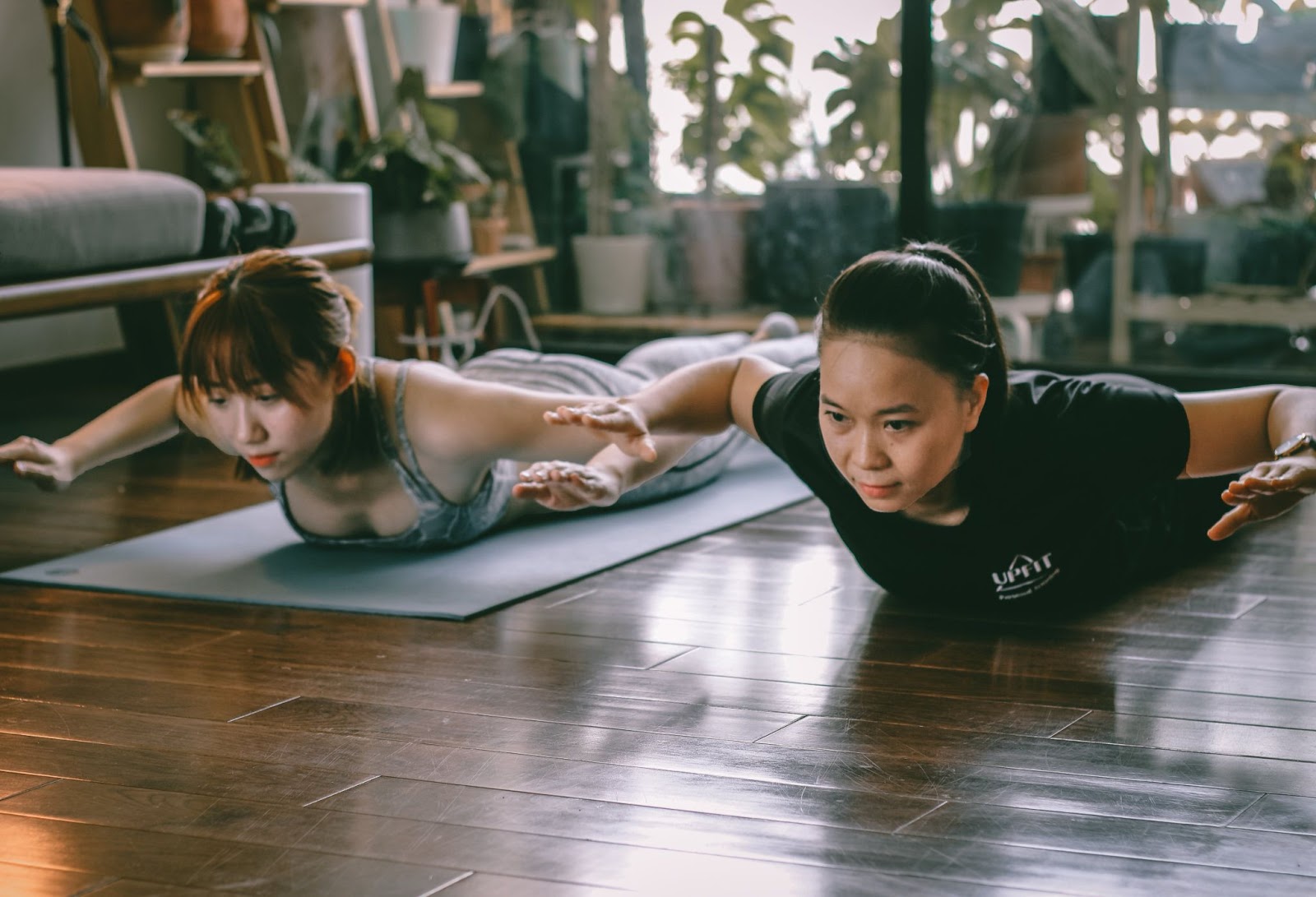If the year 2020 has taught us anything, it’s that our health takes priority.
In addition to the many societal changes of last year, the way we exercise has changed, too. With more people staying at home without access to gyms, the fitness landscape has transformed dramatically.
With 2021 upon us, we can expect to see even more changes to fitness culture. Industry experts are predicting massive shifts, so you may wonder what this year has in store.
Here are the top 9 fitness trends predicted for 2021.
With gym restrictions in place for the foreseeable future, consumers are expected to continue to invest in at-home fitness experiences.
1. Home gyms
According to a recent poll of 2,000 people by OnePoll, 75% of people believe it’s easier to stay fit at home. Since the COVID-19 pandemic began in early 2020, 64% of respondents stated that they’re more interested in at-home exercise than ever before.
As the uncertainty of the pandemic continues into 2021, it’s anticipated that most people will stick with at-home workouts, dedicating living space to personalized home gyms.
Notably, you can get in a good workout without needing to buy expensive equipment. The average American spent $95.79 on home gym equipment during quarantine — considerably less than a gym membership.
With a pair of dumbbells and exercise bands, you can make getting in shape accessible and affordable.
2. Apps for minimal-equipment exercise
Though using a home gym works for some people, many don’t have enough space. What’s more, it’s possible to get in a good workout without spending a penny.
Going forward, expect to see more people utilizing free YouTube videos and exercise apps to guide them through workouts. Many of these exercises require minimal or no equipment and use your body weight for resistance.
3. Luxe indoor gyms
Gym and boutique fitness studio closures during the pandemic led to a surge in sales of high-end workout equipment.
In fact, the treadmill and stationary bike company Peloton experienced a 232% increase in sales during the first quarter of 2020. Though these exercise machines require an initial investment, they’re hugely popular and highly rated.
Affluent customers are expected to create customized, fully equipped home gyms replete with items like high-end treadmills, stationary bikes, row machines, and workout mirrors.
Due to a surge in interest in whole-body health, many people are approaching fitness as one piece of a larger health puzzle rather than a way to simply gain strength. To that end, they’re balancing exercise with restorative activities like sleep and meditation.
4. Recovery
As people become savvier about workouts, they’re using post-workout time to recover faster and enhance performance. Access to top-of-the-line recovery tools once reserved for professional athletes and physical therapists are making their way into homes.
Sales of products that soothe sore or tight muscles, improve circulation, and increase relaxation are expected to increase in 2021, just as they did the year prior.
Furthermore, people are increasingly focused on whole-body wellness, which involves treating all aspects of health, such as exercise, nutrition, sleep, stress, and mindfulness.
As such, they’ll be looking for products, apps, and tools to help them track their progress, sleep better, and improve overall well-being.
5. Wearable devices
Wearable devices have soared in popularity over the past decade. In fact, it’s predicted that by 2022 over 900 million people will wear these devices. By 2025, the industry is expected to be worth over $70 billion.
People will rely on these devices to provide detailed information about their health, sleep habits, and recovery, alongside personalized recommendations.
6. Mind-body connection
Over the course of the pandemic, people have become interested in combining exercise and mental relaxation to relieve stress. Fitness enthusiasts are looking for ways to promote physical and mental well-being in unison rather than as two separate activities.
Thus, yoga, pilates, and other mind-body activities are gaining popularity and expected to become a $66 billion industry by 2027. This figure includes in-person and virtual classes, equipment, and apparel.
There’s also a growing push for more intentional exercise, with focus placed on form and muscle activation instead of mindlessly going through the motions of a workout. These changes may improve workout quality and keep your mind focused on the task at hand (1
7. Virtual training
Though physical or social distancing will be in place throughout 2021 in numerous locations, athletes are finding new ways to train and stay competitive. These include options from digital at-home cycling programs to online workout communities.
Users can log in to live or prerecorded workouts taught by real trainers and share their progress with peers. This industry is forecasted to be worth $30 billion by 2026.
8. Active video games
Though training apps are popular, the video game industry is also incorporating fitness into their games by using body movement as the main controller.
You can play by yourself, with friends, or strangers online to get in a fun workout.
9. Solo fitness
Staying indoors for most of 2020 and into the new year has been a difficult feat for most of us. Depending on where you live, you may have been allowed to go outside and get some much-needed activity.
One 2020 trend that’s expected to continue are sports that naturally lend themselves to social distancing, such as golf, outdoor cycling, and surfing.
According to figures from Golf Datatech, the number of rounds played in August 2020 was up 20.6% from the year prior. Outdoor cycling has enjoyed a similar surge, with bicycle sales up 121%.
Surfing has gained traction along the East and West Coasts of the United States as a physically and mentally demanding sport. As such, these solo sports may continue to grow post-pandemic as a way to get outside while still practicing physical distancing.
The bottom line
In 2021 you can expect to see a huge shift in the fitness industry.
With ever-changing technology, the fitness industry is expected to keep up with the times and provide a more personalized approach to fitness and health.
From at-home workouts to virtual training and health monitoring, 2021 promises to make fitness more accessible and enjoyable for all.




